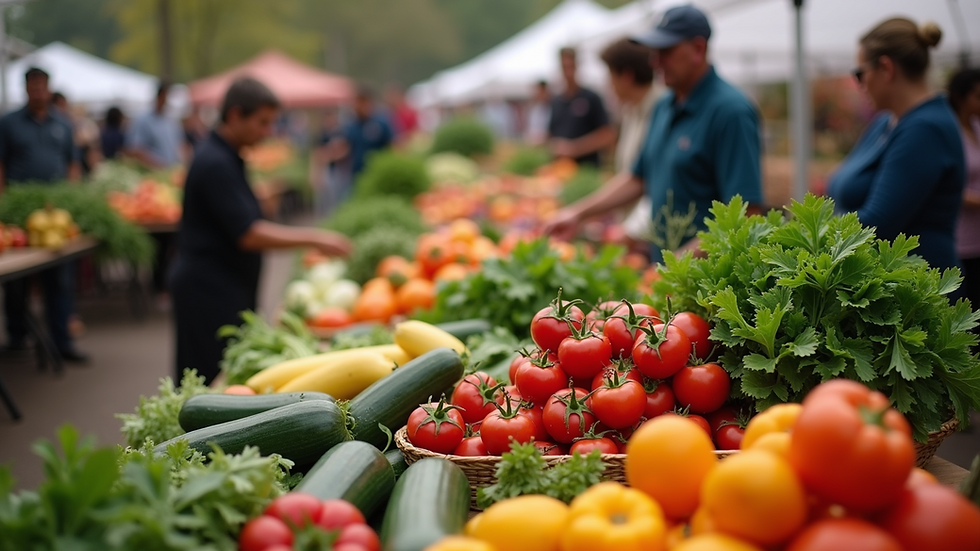Navigating Food Assistance Options in Washington State
- Giovanne Schachere

- Oct 4
- 3 min read
Access to nutritious food is essential for health and well-being. In Washington State, many programs and organizations work to provide food help to those in need. Understanding these options can make a significant difference for individuals and families facing food insecurity. This guide will walk you through the key resources, eligibility criteria, and practical steps to get the support you need.
Understanding Washington Food Help Programs
Washington State offers a variety of food assistance programs designed to support different groups, including low-income families, seniors, children, and individuals experiencing temporary hardship. These programs aim to reduce hunger and improve access to healthy food.
Some of the main programs include:
Supplemental Nutrition Assistance Program (SNAP): Provides monthly benefits to purchase food at authorized stores.
Women, Infants, and Children (WIC): Offers nutrition education and food benefits for pregnant women, new mothers, and young children.
School Meal Programs: Free or reduced-price breakfast and lunch for eligible students.
Food Banks and Pantries: Local organizations distributing free groceries to those in need.
Each program has specific eligibility requirements based on income, household size, and other factors. It is important to review these criteria carefully to determine which programs you qualify for.

How to Access Washington Food Help Services
To get started with food assistance in Washington State, follow these practical steps:
Identify Your Needs: Determine if you need ongoing support or short-term emergency food.
Check Eligibility: Visit official websites or contact local agencies to understand program requirements.
Gather Documentation: Prepare necessary documents such as ID, proof of income, and residency.
Apply Online or In Person: Many programs allow online applications, but some may require visiting an office.
Follow Up: Keep track of your application status and respond promptly to any requests for additional information.
For example, to apply for SNAP benefits, you can use the Washington Connection portal, which streamlines applications for multiple assistance programs. Local community centers and nonprofit organizations can also provide guidance and help with the application process.

How to get free food in Washington state?
If you need immediate food support, there are several ways to access free food in Washington:
Food Banks and Pantries: Many communities have food banks that distribute groceries weekly or monthly. You can find locations through Feeding America or local directories.
Community Meals: Churches, shelters, and community centers often host free meal events.
Farmers Markets and Food Drives: Some markets offer free produce days or accept food assistance benefits.
School and Summer Meal Programs: During the school year and summer breaks, children can receive free meals at participating sites.
To find free food near you, use online tools like the Washington Food Coalition’s locator or contact local social service agencies. Volunteering at these sites can also be a way to connect with resources and community support.

Tips for Maximizing Food Assistance Benefits
To make the most of available food help, consider these practical tips:
Plan Your Meals: Use your benefits to buy nutritious staples like fruits, vegetables, whole grains, and proteins.
Learn Cooking Skills: Simple recipes can stretch your food budget and improve health.
Combine Resources: Use multiple programs together, such as SNAP and WIC, to cover different needs.
Stay Informed: Programs and eligibility rules can change, so keep up to date with local agencies.
Seek Additional Support: Some organizations offer nutrition education, cooking classes, and financial counseling.
By being proactive and informed, you can improve your food security and overall well-being.
Finding Help Beyond Food Assistance
Food support is just one part of a broader network of services available in Washington State. If you are facing challenges such as housing instability, healthcare needs, or employment issues, many organizations provide comprehensive assistance.
Connecting with local nonprofits, government agencies, and community groups can open doors to:
Housing and utility assistance
Healthcare and mental health services
Job training and education programs
Childcare and family support
For those interested in learning more about the mission and services related to food assistance in washington state, Mystic Cares offers valuable resources and community programs designed to help individuals and families thrive.
Taking advantage of these resources can help create a stable foundation for long-term success and well-being.
Navigating food assistance options in Washington State can feel overwhelming, but with the right information and support, you can find the help you need. Whether you are seeking emergency food, ongoing benefits, or additional community services, there are many pathways to improve your access to nutritious food and build a healthier future.


















